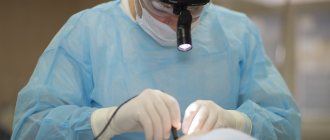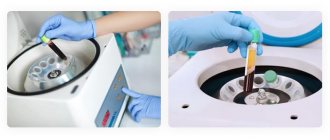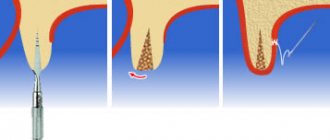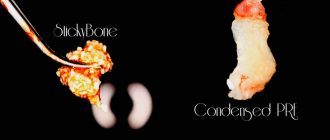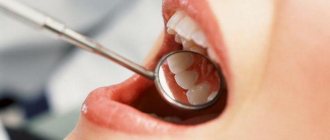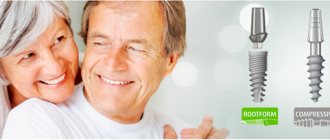What is electrophoresis?
The method is based on the fact that medications are delivered to the diseased area using direct current, which has low voltage and strength.
The combined effect of galvanization and drugs activates metabolic, immune and physicochemical processes. The therapeutic effect is determined by which electrode is dominant during the procedure. The cathode allows you to normalize metabolism and the functioning of the endocrine glands, expand lymphatic and blood vessels, and stimulate the production of biologically active substances.
The anode is responsible for relieving pain and reducing inflammation. It also has a calming effect, removes excess fluid from the body and relieves swelling.
The advantages of electrophoresis are:
- increasing the effectiveness of the drug;
- prolongation of their action;
- no adverse reactions from the gastrointestinal tract;
- the ability to use smaller doses of drugs.
In addition, this procedure does not damage the skin.
How is electrophoresis done?
The mechanism of action is as follows: a medicinal substance is applied to the body, pad and electrode. Its ions are driven by electric current. Through the sweat ducts, the medicine travels through the bloodstream to the necessary organs and tissues. The effect of therapy depends on the concentration of the substance, the strength of the current, the duration of the procedure, and the specifics of the patient’s skin.
During the procedure, children are given minimum parameters. To avoid fright and fear, it is important for young children to properly prepare for treatment, explain that it will not hurt, but slight tingling is possible. The first procedure, for the purpose of getting to know each other, is carried out at minimum settings or even without turning on the device.
For infants, the session is performed an hour after feeding or 45 minutes before it.
Before and after therapy, the nurse must conduct a skin examination. There should be no damage, redness or burns. After exposure to current, it is advisable to lubricate the area where the electrodes are applied with cream or special oil.
Where in Moscow can electrophoresis be done?
The Polyclinic+1 clinic on Tretyakovskaya employs qualified specialists who are fluent in this method of physiotherapy. We offer medicinal electrophoresis for the treatment of diseases:
- cardiovascular;
- musculoskeletal;
- urogenital;
- nervous and other systems, as well as the gastrointestinal tract.
We use proven drugs: lidase, calcium chloride, dimexide, magnesia, karipazim and so on.
Our specialists individually select the current strength so that the procedure is effective and the patient does not experience discomfort. They also calculate the amount of the drug, taking into account
- patient's age;
- characteristics of his body;
- skin condition and a number of other parameters.
Before prescribing medicinal electrophoresis, we will make sure that you have no contraindications. These include:
- neoplasms;
- tendency to bleed;
- skin changes;
- feverish conditions and so on.
The cost of one electrophoresis procedure depends on its type:
- superficial (through the skin) - 800 rubles;
- abdominal (through the rectum or vagina) - 1200 rubles.
Types of electrophoresis
- Galvanic electrophoresis . The current is supplied continuously, one of the positive “+” electrodes is placed on the diseased area, the other electrode with a negative “-” electrode is placed according to the diagrams indicated in the operating manual for the device;
- Bath electrophoresis . The electrodes are placed in a bath with a healing solution. The patient lowers the injured part of the body into the liquid. This method is suitable only if the limb is damaged.
- Cavity electrophoresis . One of the electrodes is placed in a hollow organ such as the stomach, uterus, bladder or intestines; a medicinal solution is administered. The other electrode is located on the surface of the body.
- Interstitial electrophoresis . The solution is administered by injection or by mouth, after which electrodes are placed in the area of inflammation.
Sometimes electrophoresis is called iontophoresis, but this is not entirely true: yes, both procedures work on galvanic current, however, it’s all about its quantity. With iontophoresis, the discharge is very weak and constant, while electrophoresis involves its increase during the session.
The differences don't end there. In iontophoresis, two oppositely charged electrodes are placed next to each other in a pad soaked in a physical solution. With galvanic electrophoresis, one electrode is placed on the problem area of the patient’s body, and the person holds the oppositely charged electrode in his hand (or the electrode is fixed on the body, depending on the type of procedure).
Next, we will cover in more detail the method of galvanic electrophoresis, since it is this method that is most often used both in medicine and in cosmetology.
Electrophoresis in gynecology
At the Polyclinic+1 clinic we practice an integrated approach to the treatment of gynecological diseases. Therefore, along with tablets, suppositories and other means, we use such an effective method as electrophoresis.
This method is that the drug is delivered directly to the diseased organ, bypassing the circulatory system and gastrointestinal tract. The procedure involves a weak alternating current flowing through positive and negative electrodes. It causes medicinal solutions to disintegrate into ions, which enter the body through the sweat and sebaceous ducts of the skin.
The advantages of electrophoresis are:
- accuracy of impact;
- the result after one or two procedures;
- painlessness;
- non-traumatic.
Among the advantages are efficiency and cost-effectiveness: to achieve the goal, you can use a minimum amount of medications.
Electrophoresis for children
Electrophoresis is a modern, high-tech type of physical therapy treatment that involves transdermal (through the skin) delivery of medications to a painful area without the need to inject into muscle or soft tissue, administer the medication through a vein, or take pills. Instead, the liquid medicine is applied to a dampened pad and then applied to the sore area. Wires are then attached to the pad to an electrophoresis device, which delivers a low, direct electrical current that carries charged drug particles through the skin. The medicine can be administered from either the positive pole or the negative pole, depending on the type of medicine. It is safe, effective and inexpensive. Electrophoresis can help with various diseases, such as bursitis, tendonitis, in the treatment of the consequences of injuries, in the treatment of scar tissue. Electrophoresis in children is also used to treat neurological diseases and diseases of the respiratory system.
Electrophoresis in gynecology: indications and contraindications
Exposure to electric fields in combination with active substances allows:
- relieve swelling;
- eliminate the inflammatory process;
- improve blood circulation;
- accelerate interstitial metabolism.
In addition, the procedure activates secretory activity, as well as the regeneration of the endometrium of the uterus after miscarriages and abortions.
Various substances are used for electrophoresis in gynecology - for example, zinc is good for ovarian pathologies and stimulates the production of hormones. This solution is also indicated for inflammation, cervical erosions and uterine fibroids.
Electrophoresis with lidase in gynecology is prescribed after surgical interventions. An extract from animal testes eliminates adhesions and prevents the formation of scars.
In gynecology, electrophoresis is also used with:
- iodine - with high estrogen levels;
- potassium - for pain caused by adhesions;
- dimexide - for cervical erosion, inflammatory and infectious diseases;
- magnesia - for gestosis or danger of premature birth;
- copper - with ovarian hypofunction.
The list of diseases for which this procedure is recommended is constantly expanding, but there are also contraindications.
We carefully examine our patients to ensure that electrophoresis can be performed without any concerns. Women who are found to have:
- dermatitis;
- tuberculosis;
- blood diseases;
- ischemia;
- hypertension II and III degrees;
- neoplasms;
- acute purulent processes.
Contraindications are also intolerance to current and a tendency to bleed.
How is the session conducted?
Before starting work, prepare the device by changing the limit value of the ammeter depending on the current strength prescribed by the doctor. Electrodes with pads moistened with the appropriate preparation are applied and secured to the patient. It is strictly forbidden to apply electrodes directly to the body, since as a result of chemical reactions, either an acidic or an alkaline environment can form under the electrode and cause a chemical burn. Between the electrode and the body there must be a pad of calico or flannel, at least 5 mm thick, moistened with water. This kind of gasket reduces skin resistance, helps eliminate the effect of electrolysis on the skin, and makes the penetration of the medicinal substance more uniform. The electrodes are connected to the wires with terminals, the wires are connected to the “output” of the device, observing the polarity, and the device is connected to the network.
Application of electrodes
It is extremely important to place the electrodes correctly. For cervical osteochondrosis, a galvanic collar can be used, when one of the collar-shaped electrodes is located on the back, neck and shoulder girdle, and the second in the lumbar region. Accordingly, if a doctor prescribes a drug with a positively charged sign, then an anode should be placed on the shoulders so that the medicinal substance is repelled from it and penetrates deep into the skin. If a medicinal substance with the opposite sign is prescribed for electrophoresis, then this electrode should be the cathode. The standard current strength for cervical osteochondrosis is from 6 to 15 milliamps, and the session duration is from 5 to 15 minutes. Procedures can be performed daily or every other day; the course consists of an average of 15 procedures. After each procedure, the time gradually increases by 2 minutes, and the current strength is increased by 2 milliamps. In the case of lumbosacral osteochondrosis, one of the electrodes is applied to the lumbosacral region, and two paired electrodes of opposite polarity can be located on the anterior surfaces of the thighs. The current strength is also up to 15 milliamps, the duration of one session is up to 20 minutes, the duration of the course is up to 20 procedures, either daily or every other day. When conducting electrophoresis for protrusions and hernias in the thoracic region, special techniques for applying electrodes are also used.
After the signal light comes on, the required current strength is set using a potentiometer, depending on the readings of the device. It is important that the current strength at the very beginning needs to be set less than necessary, since then the current will spontaneously increase somewhat, since the skin resistance under the electrodes will decrease. After 3-4 minutes, the current strength is finally adjusted taking into account the patient’s sensations. There should be no burning sensation, unpleasant sensation, or feeling of “goosebumps” under the electrodes.
After the required time has passed, the current strength is gradually reduced to 0, and only then the electrodes and pads are removed from the patient.
During the procedure, the patient may feel a slight tingling or warmth under the electrodes, but without pain or discomfort. If a strong burning sensation or severe pain occurs, it is necessary to reduce the current strength or stop the procedure.
Medicinal electrophoresis in the gynecology department of our clinic
The procedure is prescribed by experienced gynecologists - R. A. Sasunova and V. S. Rigas. Guided by medical indications and the individual characteristics of the patient, they determine the order of the course of treatment. The woman’s condition is monitored and, if necessary, prescriptions are adjusted.
In our gynecology department we use two types of electrophoresis:
- percutaneous (to the lower abdomen);
- vaginal.
In the first case, the cost is 800 rubles per session, in the second - 1200 rubles.
CHILD'S REGIME AFTER THE PROCEDURE
After the procedures, it is necessary to allow the child to rest for 20–30 minutes in the rest room. If you have to go outside in cold weather, then the rest should be longer. After electrophoresis, it is not recommended to warm the area of exposure so as not to change the concentration of the drug deposited in the skin. If the skin becomes dry after the procedure (this is possible due to exposure to acidic or alkaline electrolysis products and changes in the reactivity of the sebaceous and sweat glands), it can be treated with a moisturizing lotion a few hours after the procedure.
Electrophoresis with calcium
Electrophoresis with calcium chloride is prescribed for various diseases. This procedure is very effective, and results appear faster than from pills and injections. Doctors at Polyclinic+1 on Tretyakovskaya have extensive practical experience and use modern equipment.
During electrophoresis, drugs containing calcium are exposed to electrical impulses. Thanks to this, they easily penetrate the skin. Such an important element as Ca can accumulate, after which the human body uses it as needed.
Effect of electrophoresis
During electrophoresis, the doctor uses a special device - an apparatus to which an electric current flows. But before this, the electrodes of the device are treated with a drug, which ultimately penetrates the affected tissues of the patient, exerting a therapeutic effect on them. Such a beneficial effect can be achieved due to the fact that the electrical conductivity of human skin is quite weak , so the electrical impulse, together with the medicine, enters the body through the sweat pores and sebaceous glands.
Cervical osteochondrosis
Orthopedic pillows
Electrophoresis is used in the treatment of osteochondrosis for the following reasons:
- under the influence of electric current, pain syndrome, which is a frequent companion of cervical osteochondrosis, is eliminated;
How does electrophoresis work? - the duration of the effect of electrophoresis is an order of magnitude longer than that of other therapeutic methods;
- the risk of side effects is minimal, and no pain occurs during the procedure;
- drugs used in electrophoresis act exclusively on the affected area.
Electrophoresis for osteochondrosis
On a note! To determine the required dose of the drug and the duration of electrophoresis, the doctor uses a special table with data, which describes in detail all the actions and dosages. This is the only way to achieve the desired effect in the treatment of cervical osteochondrosis.
Electrophoresis with calcium chloride: indications
The procedure has anti-inflammatory, hemostatic, antispastic and antiallergic effects. It is prescribed for:
- pathologies of the respiratory system;
- diseases of the musculoskeletal system;
- Do not lie;
- paralysis and so on.
Electrophoresis with calcium chloride helps well with sinusitis, allergic and vasomotor rhinitis. This procedure has a beneficial effect on the sinuses, after which the inflammatory process stops and swelling of the soft tissues decreases. A weak direct current activates blood circulation, which reduces pain and discomfort, improves immunity, and the patient recovers faster.
At the Polyclinic+1 clinic we perform endonasal electrophoresis with calcium chloride. Tampons soaked in a medicinal solution are inserted into each nostril of the patient, to which electrodes are connected. The procedure lasts about 10–15 minutes and does not cause any discomfort.
If you want to get rid of dental problems, we recommend calcium electrophoresis for teeth. It provides remineralization, restores and strengthens tooth enamel, saturates it with useful elements. The procedure is also indicated in case of
- inflammation of the periodontium and salivary glands;
- pulpitis;
- cyst;
- neuralgia and other dental diseases.
Indications for electrophoresis
The appointment of such a physiotherapeutic technique is justified for pathologies that require local drug therapy. These are diseases and disorders in the functioning of the following body systems:
- respiratory;
- digestive;
- cardiovascular;
- urogenital;
- reproductive;
- central nervous.
In addition, the method is widely used for chronic dermatological diseases, ophthalmological pathologies, and dental problems. EF has proven itself well in the fight against musculoskeletal disorders and the elimination of scar formations. Since Soviet times, the method has been known as one of the most effective types of physiotherapy for problems associated with the ENT organs.
Is electrophoresis indicated for children?
The painlessness and low concentration of medicinal substances when using EF makes it quite acceptable for use in pediatric practice. In pediatrics, there are indications and contraindications for electrophoresis. Children from 3 weeks of age to 18 years of age are prescribed it for:
- eliminating hypo- or hypertonicity of muscles;
- treatment of hip dysplasia;
- pain relief;
- therapy of diseases of the bronchi and lungs;
- combating neurological problems of various nature;
- treatment of diseases of the gastrointestinal tract, etc.
EF improves the absorption of various drugs, for example, magnesia, calcium, dibazole, papaverine, etc. It is often used in tandem with massage to achieve even greater results in infants.
A similar therapeutic technique for children is also applicable in combating the consequences of birth injuries, in diseases of the skin and navel, in the treatment of phlegmon, in the prevention and treatment of rickets. In addition to massage, EF can be combined with UHF therapy, electrical stimulation, physical therapy and some other tools of modern physiotherapy.
Electrophoresis during pregnancy
While pregnant, women may also be prescribed physical therapy. This happens in the following situations:
- If there is a threat of miscarriage after 8 weeks. In this case, magnesium sulfate is introduced using current, which relaxes the muscles of the uterus and reduces the sensitivity of the myometrium to oxytocin. The same procedure is indicated in later stages if there is a risk of premature birth. To achieve the desired result, 5 to 10 procedures are prescribed.
- With placental insufficiency. 5-10 sessions of EF restore normal uteroplacental blood flow, resume the process of oxygen saturation of the fetus and reduce the risk of developing hypoxia.
- For toxicosis. In the fight against mild manifestations of toxicosis, the method is effective in the first and second trimester. The introduction of B vitamins is indicated. Up to 10 visits to the physiotherapy room helps to get rid of vomiting, reduce nausea, increase appetite and generally improve the condition and well-being of the expectant mother. It is permissible to take a second course 2 weeks after the end of the first.
After childbirth, the assistance of a physical therapist may be needed to heal stitches from a caesarean section or for severe perineal tears. Also in the postpartum period, EF helps:
- heal cracked nipples, reduce the risk of mastitis;
- fight lactostasis, stimulate milk flow;
- improve contractile function of the uterus, intestinal peristalsis;
- perform endometritis prevention, etc.
According to the observations of specialists and reviews of patients, the administration of drugs through the action of electric current is well tolerated by pregnant women. The area of influence, the current strength, and the type of drugs used are determined individually as prescribed by the treating specialist. The maximum that the patient can feel during the procedure is a slight tingling at the site where the electrodes are applied.
Why do people come to us for calcium electrophoresis?
Our specialists treat each patient carefully. When prescribing a procedure, they take into account:
- person's age;
- nature of the disease;
- general health;
- presence of pathologies;
- individual characteristics of the body.
Based on this, the dosage of the drug, the current strength and the exposure time are determined. This approach allows you to get the maximum effect from the procedure and avoid discomfort. If the patient feels a burning, tingling or itching sensation, the doctor reduces the current intensity.
We take this procedure responsibly, so we do not prescribe it to people who have contraindications. In particular, electrophoresis is prohibited when:
- high temperature;
- oncological diseases;
- poor blood clotting;
- renal, cardiac and liver failure.
Contraindications to the use of electrophoresis
Like any other method of physiotherapy or drug, electrophoresis has its own contraindications that you need to be aware of:
- presence of a pacemaker;
- heart failure;
- tumors;
- heat;
- various inflammations at the acute stage;
- poor blood clotting (pathology, menstruation is a natural process and is not a limitation);
- severe form of bronchial asthma;
- skin diseases such as dermatitis;
- cuts, wounds or other damage in the area where the electrodes are applied;
- allergy to medication and intolerance to electrical procedures.
Side effects are rare, but they do exist. This may include redness, itching, or swelling at the electrode site if you are allergic to a medication or have a reaction to electrical current. At the 2-3 session, there may be an increase in temperature and pain due to inflammatory diseases, but after the end of the course they disappear on their own.
